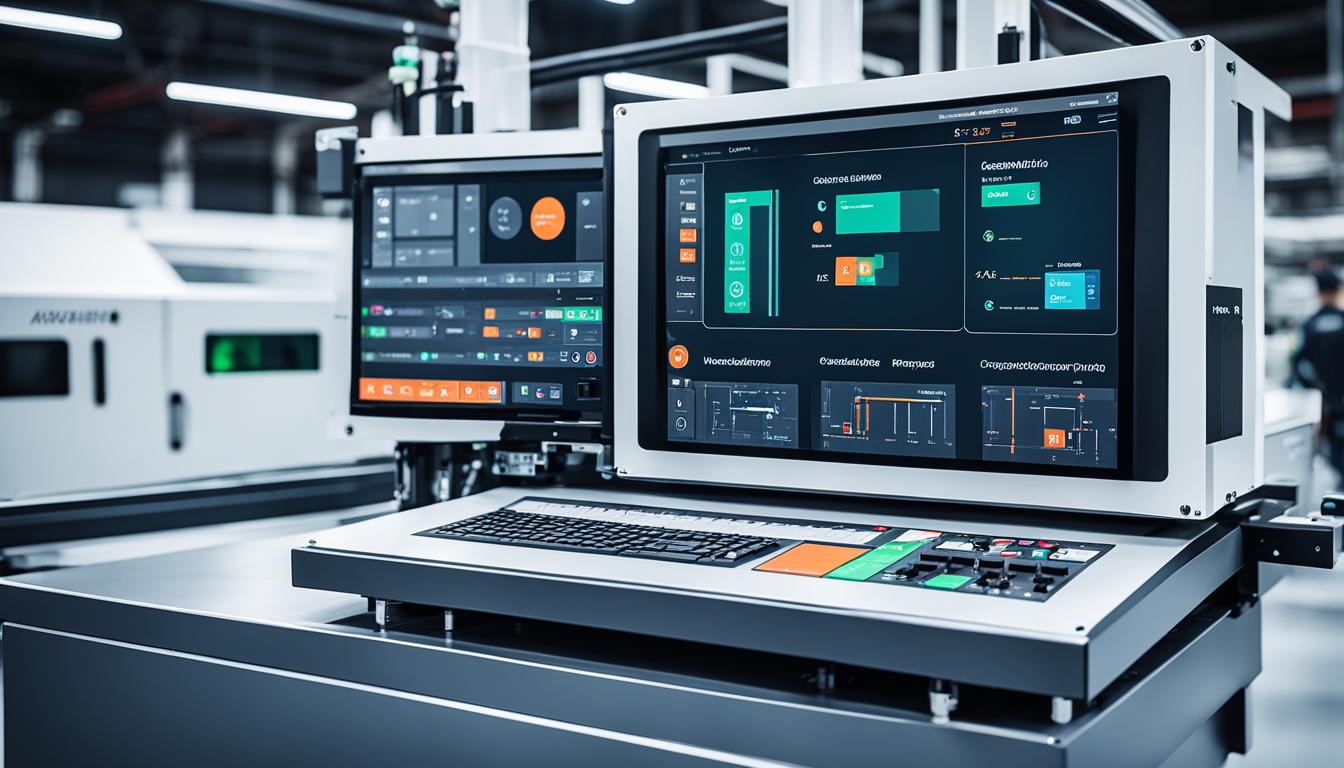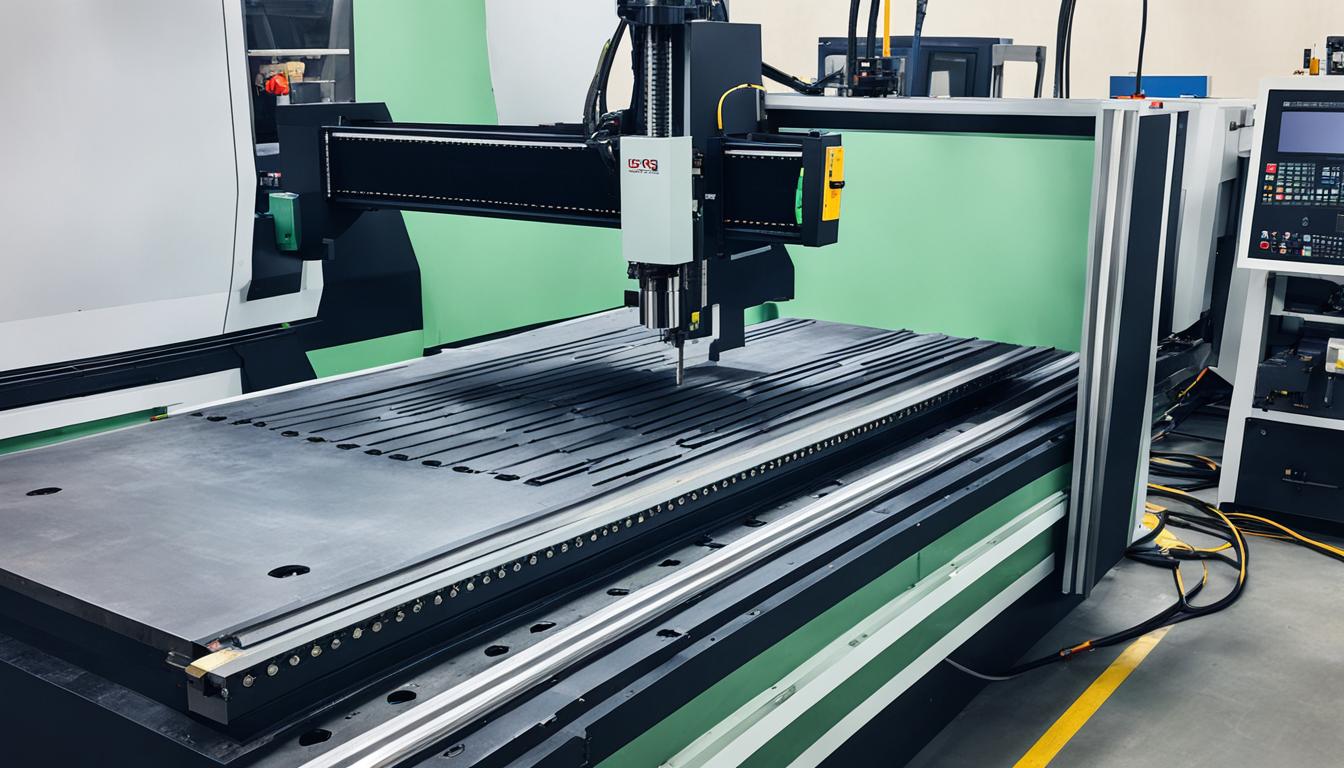The Siemens CNC Controller, specifically the SINUMERIK series, is a sophisticated automation solution designed for machine tools across various manufacturing applications. These controllers offer precise control and optimization for a wide range of machining processes, from individual part production to large-scale manufacturing.
SINUMERIK CNC systems integrate advanced features such as digital twin capabilities, which allow for virtual simulation and testing of machining processes before actual production. This technology enables manufacturers to optimize tool paths, reduce waste, and increase overall productivity. The controllers support multiple axes of motion, high-resolution displays, and user-friendly interfaces, making them suitable for both simple and complex machining tasks.
Siemens continuously updates the SINUMERIK line, incorporating new hardware and software improvements to enhance performance and adapt to evolving industry needs. These controllers are particularly valued for their ability to streamline operations, improve production efficiency, and facilitate the integration of robotics and other advanced manufacturing technologies.
- Siemens CNC controllers are used in industrial control systems and machining applications.
- They offer precise control over mechanical motion, ensuring accuracy and efficiency.
- Siemens CNC controllers feature programmable logic controllers for robust digital forensic techniques.
- They are essential tools for achieving efficient and reliable industrial automation.
Importance of Siemens CNC Controllers in Industrial Automation
Siemens CNC controllers are essential components in the realm of factory automation and industrial control systems. Their role is pivotal in simplifying the installation and operation process of electrical automation systems, thereby significantly improving work efficiency.
These highly advanced controllers find wide-ranging applications across various industries, including automotive, steel, oil, and electronics. They provide crucial control and monitoring capabilities for diverse processes such as material handling, cutting, and temperature control.
Siemens CNC controllers offer numerous benefits that significantly contribute to industrial automation. They feature a simple programming structure, ensuring ease of setup and use. Additionally, these controllers boast outstanding durability, enabling them to function seamlessly even in demanding environments.
The robustness of Siemens CNC controllers is reflected in their low failure rates and minimal maintenance costs. Their reliability allows for uninterrupted 24/7 production, enabling companies to achieve higher-quality production at lower costs. The utilization of Siemens CNC controllers minimizes labor, errors, accidents, and expenses, resulting in enhanced efficiency and productivity.
Another advantage of Siemens CNC controllers lies in their versatility. They can be seamlessly incorporated into simple to sophisticated control systems, replacing traditional wired connections and reducing mechanical faults and troubleshooting difficulties.
Overall, Siemens CNC controllers play an indispensable role in industrial automation, offering unparalleled control and monitoring capabilities coupled with durability, reliability, and cost-effectiveness.
Functionality and Features of Siemens CNC Controllers
Siemens CNC controllers offer a wide range of functionality and features that make them indispensable tools for professionals in the machining industry. These advanced controllers provide precise control over the mechanical motion in CNC machines, enabling accurate and efficient machining operations.
The Siemens CNC software plays a crucial role in enhancing the performance of these controllers. It allows operators to program and customize machining processes according to their specific requirements, making them more efficient and versatile. With the ability to optimize machining processes, Siemens CNC controllers ensure improved productivity and higher-quality outputs.
The SINUMERIK 840D system, a flagship technology within Siemens CNC controllers, utilizes advanced features to optimize machining processes further. This system leverages innovative technologies and techniques to enhance precision, accuracy, and overall machining performance.
Siemens CNC controllers are designed to simplify troubleshooting processes, enabling operators to quickly diagnose and resolve issues. This capability minimizes downtime and maximizes productivity in the machining environment.
To ensure operators are equipped with the necessary knowledge and skills to effectively operate and program Siemens CNC controllers, comprehensive training programs are available. These training programs cover various aspects of CNC programming, operation, and troubleshooting, empowering individuals to unlock the full potential of Siemens CNC controllers.
With their robust functionality, user-friendly features, and emphasis on performance optimization, Siemens CNC controllers are vital components of any modern machining setup.
| Functionality | Features |
|---|---|
| Precise Motion Control | Provides accurate control over mechanical motion in CNC machines |
| Programmable Software | Allows for customization and optimization of machining processes |
| Advanced Technology | Utilizes cutting-edge features and algorithms to enhance machining performance |
| Troubleshooting Capabilities | Enables quick diagnosis and resolution of issues |
| Training Programs | Comprehensive courses to develop necessary skills for effective operation |
Benefits of Siemens Industry 4.0 in CNC Control
Siemens Industry 4.0 revolutionizes CNC control by offering a multitude of benefits that optimize manufacturing processes and enhance productivity. By leveraging advanced technologies such as big data analysis, modeling, simulation, algorithms, and IoT, Siemens Industry 4.0 enables significant improvements in asset management and operational efficiency.
One of the primary advantages of Siemens Industry 4.0 in CNC control is enhanced asset management. Through comprehensive data analysis and sophisticated algorithms, manufacturers gain better control over reliability-related risks and can maximize the performance of their assets. This results in optimized intervention frequency, minimized downtime, and reduced resource usage, ultimately leading to improved overall equipment effectiveness (OEE).
Siemens Industry 4.0 also facilitates the digitalization and integration of industrial manufacturing and logistics processes. By leveraging digital technologies, companies can streamline operation cycle times, reduce time to market, and achieve higher levels of product/service customization. The seamless connection between different components within the production environment enables real-time monitoring and control, ensuring improved quality and greater operational agility.
However, the implementation of Industry 4.0 in CNC control also involves addressing cybersecurity and data privacy challenges. As manufacturers become increasingly interconnected, robust security measures must be put in place to protect sensitive information and guard against potential cyber threats. It is crucial to implement comprehensive security protocols and adopt best practices to ensure the safe and secure utilization of Siemens Industry 4.0 technologies.
Benefits of Siemens Industry 4.0 in CNC Control:
- Improved asset management through data analysis and algorithms
- Maximized asset performance and minimized intervention frequency
- Optimized resource usage and reduced downtime
- Shortened operation cycle times and faster time to market
- Enhanced product/service customization
- Seamless integration of manufacturing and logistics processes
- Real-time monitoring, control, and improved quality

Siemens Industry 4.0 Benefits in CNC Control
| Benefits | Description |
|---|---|
| Improved Asset Management | Utilizes data analysis and algorithms to optimize asset performance and minimize intervention frequency. |
| Optimized Resource Usage | Enables efficient utilization of resources, reducing downtime and improving overall equipment effectiveness. |
| Shortened Cycle Times | Streamlines operation cycle times, accelerating time to market for products and services. |
| Enhanced Customization | Enables greater product/service customization to meet individual customer needs. |
| Seamless Integration | Allows for real-time monitoring and control, integrating manufacturing and logistics processes. |
| Improved Quality | Facilitates better quality control through real-time monitoring and data-driven insights. |
In summary, Siemens Industry 4.0 revolutionizes CNC control by offering enhanced asset management, optimized resource usage, shortened cycle times, enhanced customization, seamless integration, and improved quality control. However, it is essential to address cybersecurity and data privacy challenges to ensure the safe and secure implementation of Siemens Industry 4.0 technologies in CNC control.
Enhancing CNC Machining Performance with Statistical Process Control
Statistical process control (SPC) methods are invaluable for optimizing CNC machining performance. By closely monitoring and controlling the manufacturing process, SPC techniques ensure stability and yield satisfactory results. These methods involve analyzing data and adjusting machining parameters, leading to improved processing time and increased accuracy in the production of CNC machine parts. Moreover, SPC enables the automation of CNC machining, resulting in reduced labor costs and enhanced efficiency.
Siemens CNC controllers with their advanced technology and comprehensive training programs offer the necessary tools and knowledge to effectively implement SPC techniques in CNC machining. These controllers empower operators with the ability to collect and analyze machining data, optimize process parameters, and maintain consistent quality. By leveraging Siemens CNC technology, manufacturers can drive improved productivity and achieve higher-quality output.
The benefits of utilizing statistical process control in CNC machining are numerous. By employing data-driven decision-making, manufacturers can identify process variations, detect potential defects, and take proactive measures to ensure precise and reliable machining. With SPC, manufacturers can minimize scrap rates, reduce rework, and optimize overall production efficiency. Additionally, implementation of statistical process control can contribute to greater customer satisfaction by consistently delivering high-quality products.
In summary, integrating statistical process control into CNC machining provides a systematic approach to improving performance and achieving desired outcomes. Siemens CNC controllers, equipped with their advanced technology and complemented by comprehensive training programs, enable manufacturers to unlock the full potential of statistical process control, resulting in enhanced machining performance and increased operational efficiency.
| Benefits of Statistical Process Control in CNC Machining |
|---|
| Optimization of processing time |
| Increased accuracy of CNC machine parts |
| Automation of CNC machining process |
| Reduction in labor costs |
| Improved overall efficiency |
| Minimization of scrap and rework |
| Consistent production quality |
| Enhanced customer satisfaction |
Utilizing Statistical Control Charts in CNC Machining Performance
Statistical control charts are valuable tools for monitoring and improving the performance of CNC machining processes. These charts enable operators to track and analyze key process metrics, helping identify and address any deviations or abnormalities that may affect the quality and efficiency of machining operations.
One commonly used type of control chart is the nonparametric control chart, such as the NPDHWMA RSS chart. These charts are particularly useful when the underlying process does not follow a specified probability distribution. By monitoring the process using nonparametric control charts, operators can effectively detect and investigate any process variations.
Bayesian control charts, on the other hand, offer an alternative approach by integrating small phase-I datasets and different loss functions. This integration allows for more accurate control and decision making based on Bayesian statistics, enhancing the effectiveness of the control chart analysis.
For optimizing surface roughness and machining parameters, the combination of Shewhart control charts and response surface methodology (RSM) is widely employed. By utilizing these methods, operators can achieve statistical control over surface roughness and identify the optimal machining parameters for improved product quality.
In addition, adaptive control charts based on variable sampling interval (VSI) and sequential sampling (SS) techniques offer effective monitoring solutions for simple linear profiles in CNC machining. These techniques allow for adaptive adjustments in the sampling interval based on the observed process behavior, ensuring efficient control and detection of any potential issues.
Siemens CNC controllers, with their advanced technology and robust features, play a vital role in implementing and utilizing statistical control charts effectively. These controllers provide the necessary data collection and analysis capabilities, allowing operators to monitor and control the machining process with precision. By leveraging the power of statistical control charts and Siemens CNC technology, manufacturers can enhance CNC machining performance, optimize process parameters, and ensure consistent product quality.
Controlling a Wheelchair with an MPU Using Siemens Technology
Siemens technology offers innovative solutions for wheelchair control systems, enhancing accessibility for individuals with mobility needs. By incorporating the MPU-6050 sensor and the L298N Motor Driver, Siemens enables precise control of the wheelchair’s movement. The MPU-6050 sensor detects motion and sends signals to the L298N Motor Driver to instruct the DC motor, ensuring the wheelchair moves accordingly.
What sets Siemens technology apart is its ability to empower wheelchair users through voice-controlled commands. With the help of an app, individuals can effortlessly operate the wheelchair with simple voice instructions, eliminating the need for physical backing. The voice-controlled functionality is made possible by the ESP32 Microcontroller, equipped with an in-built Wi-Fi module.
By leveraging Siemens technology, wheelchair control systems achieve reliable performance and seamless user experience. The integration of the MPU-6050 sensor, L298N Motor Driver, and voice-controlled functionality using the ESP32 Microcontroller ensures precise control over the wheelchair, offering improved accessibility and convenience for individuals with mobility needs.
